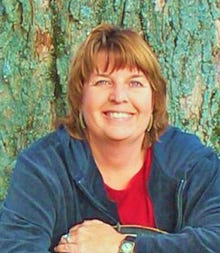While I was looking for a piano version of John Fogerty’s classic 1985 baseball song “Centerfield,” I came across a website for The Baseball Sheet Music Project. None of the songs were from 1839, the year Abner Doubleday (arguably) created the American version of the game, but the many old and obscure sheet music was a reminder of how baseball has been around longer and a part of life. every day more importantly than we realize.
As noted on the website, “The intersection of baseball and popular music is a rich component in the history of the sport and its importance in American popular culture. Although the contemporary baseball soundtrack spans a number of popular genres, the intersection of sports with popular music has its origins in the Tin Pan Alley publishing houses of the late 19th century. . . In fact, the song “Take Me Out to the Ball Game” from that era is still sung.
I learned that “The Baseball Hymn”, written by Jim Davis in 1912, was not exactly the makings of church hymns, but was to be sung to the tune “Home of the Range”, beginning with ” Don’t let the game be called out by the rain The sun is always shining for everyone. Get that tarp off the pitch. No need for a rain shield. The referee sings PLAY BALL.
Now I have known “Home on the Range” since kindergarten and there is no way those lyrics would match that tune. The chorus wasn’t much better: “Hit the ball way over the wall, over the fence and more.” Our opponents vomiting at a ball they cannot catch. And we will add to our score.
Obviously, the musician was more a musician than a lyricist or a baseball player, as his lyrics lacked significant cadence and insight into the game. They also seemed a few acts of faith shy of the respect expected from a hymn. However, from a sophomoric sense of humor point of view, I enjoyed the rhyme of “retch” with “catch”.
“Let’s Go Out To The Ball Game” (1949), featured on the Philadelphia Phillies radio shows, musically encouraged American employees to play hooky to catch the action of their hometown team: “C ‘ is a hot day today – and what do you think – let’s go out to the game. It’s a very nice day – and the boss is away – let’s go out and play. Let’s go to the ball game. Let’s take the afternoon – it looks like a really good game today. . . ”
The song sounded like it was inspired by the athletic juvenile absenteeism prompted previously in the 1910 children’s song, “I Can’t Miss This Ball Game.” Written in a sketchy fashion, the song details the plight of a student who skips school: “Now Jimmy Jones, the teacher said, you lied yesterday. You told me your mom was sick, and you had to stay home. But you went to the game instead. And just because you lied, take your slate and your ruler, and stay after school. Broken!
A quarter of a century later, the 1934 “Tiger’s on Parade” foxtrot in the G key was dedicated to Baseball Hall of Fame catcher / manager Mickey Cochrane and the Detroit Tigers: “Listen to all the drums, something is happening! What could it be? Listen to all the cheers, something is approaching. Oh darn! Oh fuck ! Here are the Tigers! Here are the Tigers! Say, don’t you see The Parade, The Parade, because the Bengals made the note. ”
Of course, they succeeded – because they weren’t skipping school or working to make the game. And the music must have been its charm because in 1934, the Tigers set a record of 101-53-0 and danced their way to first place in the American League. They didn’t lose their roar until they were beaten 4-3 in the World Series by the St. Louis Cardinals.
Speaking of dancing, a catchy 1950 song, “The Baseball Polka,” enthusiastically enthuses: “Let’s all sing baseball polka, it’s the game I love the most. How I love to listen to the cheers. When they yell “kill the referee”, it’s music to my ears. ”
What can a 2021 baseball fan say ?! Inspired by this historic musical motivation, “Coach me, I’m ready to play today!” ”
Kristy Smith’s Humorous Different Drum columns are archived on her blog: diffdrum.wordpress.com.




